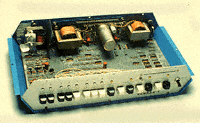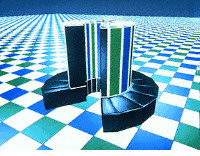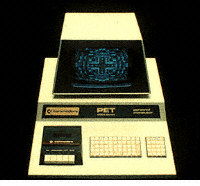|
1971
- Kenbak-1
This was the first
personal computer advertised in Scientific American for $750

Kenbak-1
(Images
courtesy of Computer History Museum)

Clive
Tomlin on tape that was sent over from America, fortnightly, with
information on the latest chemical literature
1973
- TV Typewriter
This machine
was designed by Don Lancaster and provided the first display of
alphanumeric information on an ordinary television set.

TV
Typewriter
(Images
courtesy of Computer History Museum)

John
Silk remembers the scientific database that had been built up
by ICI and how information was retrieved from it
1974
- Xerox Alto
This was
the first workstation to be built with a built-in mouse for input.
This computer stored several files simultaneously in windows,
it offered menus and icons and could link to a local area network

Xerox
Alto
(Image
courtesy of Computer History Museum)

Clive
Tomlin explains how computers were introduced directly to the
work of the chemist
1976
- Cray 1
One of
the most successful mainframe companies, the Cray 1 made its name
as the first commercially successful processor. Speed was this
machine attribute.

Cray
1
(Image
courtesy of Computer History Museum)

Dr
Ed Turner on mainframes and minicomputers
1977
- Commodore PET
The Commodore
Personal Electronic Transactor was one of the first personal computers
available.

Commodore
PET
(Image
courtesy of Computer History Museum)
1978
- 5 1/4" Flexible Disk Drive
This was
the result from a request by Wang Laboratories to produce a disk
drive small enough to use with a desktop computer. 8" floppy
disks were considered too large for these desktops. (Computer
History Museum).

5
1/4" Floppy Disk
(Image
courtesy of Computer History Museum)

1978
- Dr Ed Turner talks about his career and the introduction of
the minicomputer
1978
- Speak and Spell
This was
introduced by Texas Instruments Inc. as a learning aid for children.
It was the first electronic duplication of the human voice on
a single chip of silicon.

Clive
Tomlin explains the developments that had been made in chemical
literature information retrieval
1979
- Motorola 68000
Another
development towards faster computers, this microprocessor exhibited
speed far greater than any other developments of the time.
|

![]()
